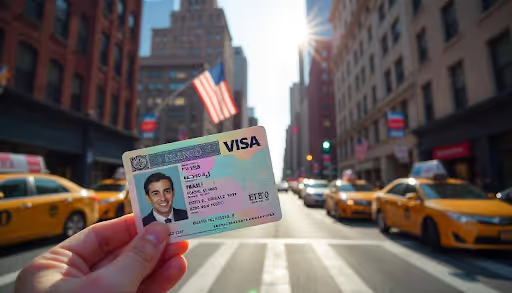.png)
.png)
Learn L1 visa requirements & documents, who can apply, how to get and renew your visa, avoid rejections, and apply from India—all updated for 2025.

The L1 visa is one of the most popular options for professionals transferring within multinational companies to work in the United States. It allows managers, executives, and employees with specialized knowledge to move to a U.S. office from a foreign branch of the same organization. But success with this visa depends heavily on preparation. Understanding the exact L1 visa requirements documents, how to apply, and why visas get rejected can save you time, stress, and costly delays.
The L1 visa is designed for intracompany transferees—employees who have been working abroad for a company and are moving to its U.S. branch, subsidiary, or affiliate. There are two main categories. The L1A visa is for managers and executives, ideal for professionals who manage teams, oversee operations, or make high-level decisions. The L1B visa is for employees with specialized knowledge, such as niche technical expertise or proprietary company processes that cannot easily be replaced. Whether you’re a startup founder scaling operations globally or a technical specialist with unique skills, the L1 visa can be an excellent fit. If you’re unsure which category applies to you, you can book a free consultation with Beyond Border to clarify your eligibility.
For your application to be strong, you’ll need to provide thorough L1 visa requirements documents. From the company side, you must show proof of a qualifying relationship between the U.S. entity and the foreign branch, such as parent, subsidiary, or affiliate agreements. You also need evidence of active business operations in both countries, like annual reports, contracts, and invoices, along with financial stability documentation such as balance sheets and tax filings. From the employee side, you’ll need a detailed resume and educational certificates to meet any L1 visa education requirements, proof that you’ve worked at least one continuous year with the company abroad, and letters outlining your current and proposed U.S. job duties. Additional supporting documents include recent salary slips, employment verification letters, a valid passport, U.S. visa-style photos, and previous visa history if applicable.
Missing or incomplete documentation can trigger a Request for Evidence (RFE) or even denial, so it’s critical to prepare carefully. Beyond Border can help you organize everything correctly before submission.
The process to apply is straightforward but must be followed carefully. Your employer begins by filing Form I‑129 with U.S. Citizenship and Immigration Services (USCIS), including all required supporting evidence. Once USCIS approves the petition, you’ll receive Form I‑797, also called the Approval Notice. If you’re applying from outside the United States, you’ll then move on to consular processing by completing Form DS‑160, paying the applicable fees, and scheduling an interview at the U.S. consulate in your country. If you’re already in the U.S. on another visa, you may request a change of status instead of attending an interview abroad. After approval, you’ll receive your L1 visa stamp and can travel to the United States to begin your role.
Ideally, start the process three to four months before your intended move to allow enough time for petition approval and consular appointments. For official instructions and the latest forms, always refer to the USCIS L1 visa filing guide. And if you need step-by-step support, Beyond Border can assist you in preparing and filing correctly.

Not all L1 visa petitions are approved, and many are denied for avoidable reasons. One of the most common causes is incomplete documentation, such as missing proof of the qualifying relationship between the U.S. and foreign entities or gaps in employment history. Another frequent issue is vague job duties. USCIS needs detailed descriptions to confirm you truly qualify as a manager, executive, or specialized knowledge worker. Some cases are denied because the applicant did not complete a full year of employment with the foreign company or because of weak financial evidence showing the U.S. entity is not viable. Fraud or conflicting information can also raise red flags.
The best way to avoid rejection is by submitting a well-drafted petition with thorough, clearly organized supporting documents. A strong employer support letter and detailed job descriptions go a long way toward approval. Before filing, you can have Beyond Border review your petition to ensure it’s complete and meets all requirements.
Yes, the L1 visa can be renewed if you need more time in the United States. L1A visas are initially granted for up to three years and can be extended in two-year increments to a maximum of seven years. L1B visas also start with an initial validity of three years but have a maximum stay of five years. It’s important to file for an extension at least six months before your I‑94 expiration date to avoid overstaying, which can negatively impact future visa or green card applications. If you’re unsure when or how to renew, Beyond Border can guide you through the process.
Most applicants applying from outside the United States will need to attend a visa interview at a U.S. consulate. You’ll typically be asked about your current role, how long you’ve been with the company, your specific job duties in the U.S., and how the foreign company is related to the U.S. entity. It’s crucial to bring all your L1 visa documents, including petition copies, the approval notice, and any additional supporting evidence. Clear, confident answers that match the information in your petition will help you succeed. If you want to practice, Beyond Border offers mock interview sessions to help you feel confident.
Unlike the H‑1B visa, the L1 visa has no annual cap, so there’s no strict quota on how many can be issued each year. However, high application volumes or policy changes can sometimes slow down processing times. Always check USCIS for the most current updates on case processing times and any changes in L1 visa policies.

What are the main L1 visa requirements?
You must have worked for the foreign branch of your company for at least one continuous year in the past three years, your company must have a qualifying relationship with the U.S. entity, and your job in the U.S. must be either managerial/executive (L1A) or require specialized knowledge (L1B).
What documents are required for an L1 visa?
You’ll need proof of company relationships, evidence of business operations in both countries, detailed job descriptions, employment history, salary slips, passport copies, visa-style photos, and your petition approval notice (Form I‑797).
How long does it take to get an L1 visa?
Processing time varies, but most cases take three to four months. Premium processing can shorten USCIS petition review to 15 days, though consular appointments still take additional time.
Can L1 visas be converted to green cards?
Yes. Many L1A visa holders transition to EB1C green cards for multinational managers and executives. L1B holders can also apply for other employment-based green cards but may need labor certification.
Why do L1 visas get rejected?
Common reasons include vague job duties, incomplete evidence of company relationship, insufficient work history, weak financials of the U.S. entity, or inconsistent information. Preparing a strong petition with professional help reduces rejection risk.
The L1 visa remains one of the most efficient options for intracompany transferees moving to the United States. By understanding the exact L1 visa requirements documents, knowing how to apply from India or abroad, preparing for interviews, and planning for extensions, you can avoid costly mistakes and delays.
If you want to ensure your L1 visa petition is strong and complete, talk to Beyond Border’s experts today. From eligibility checks to document preparation and interview coaching, Beyond Border helps professionals and employers navigate the L1 process successfully.